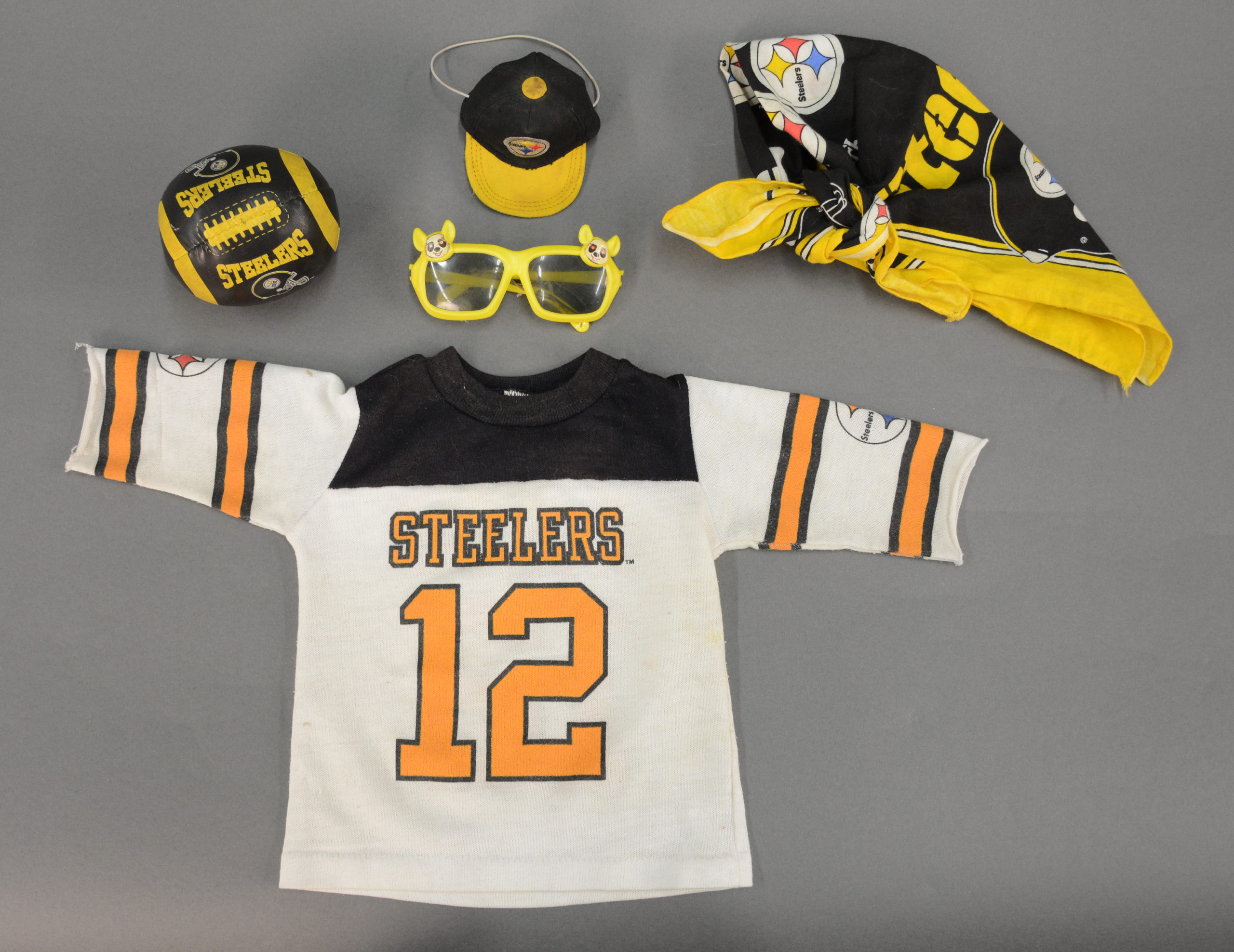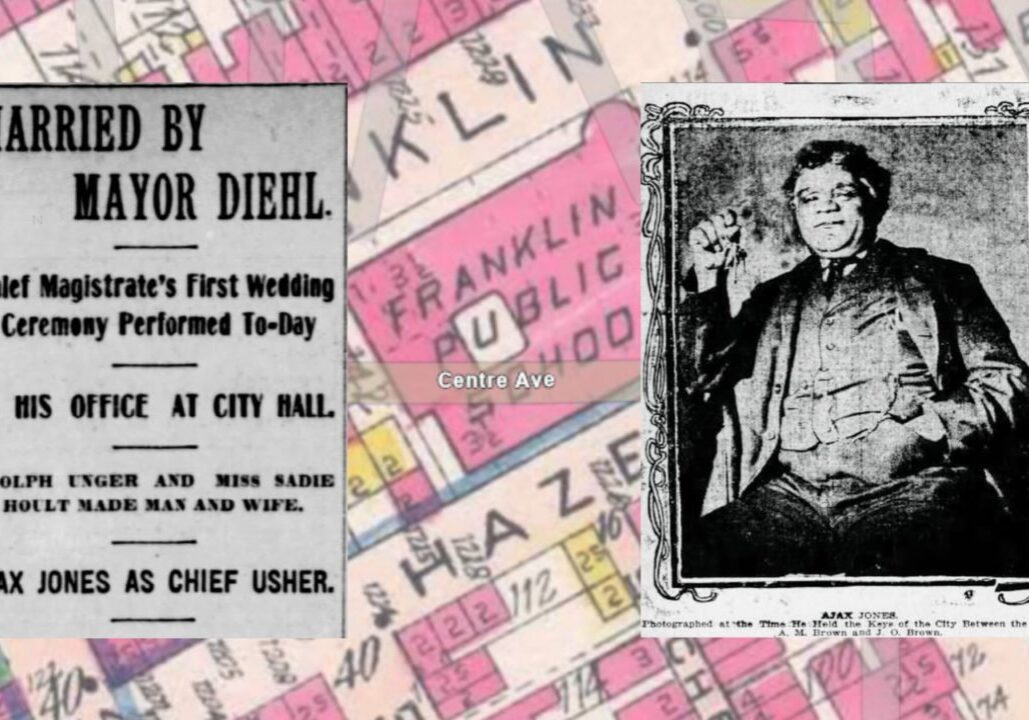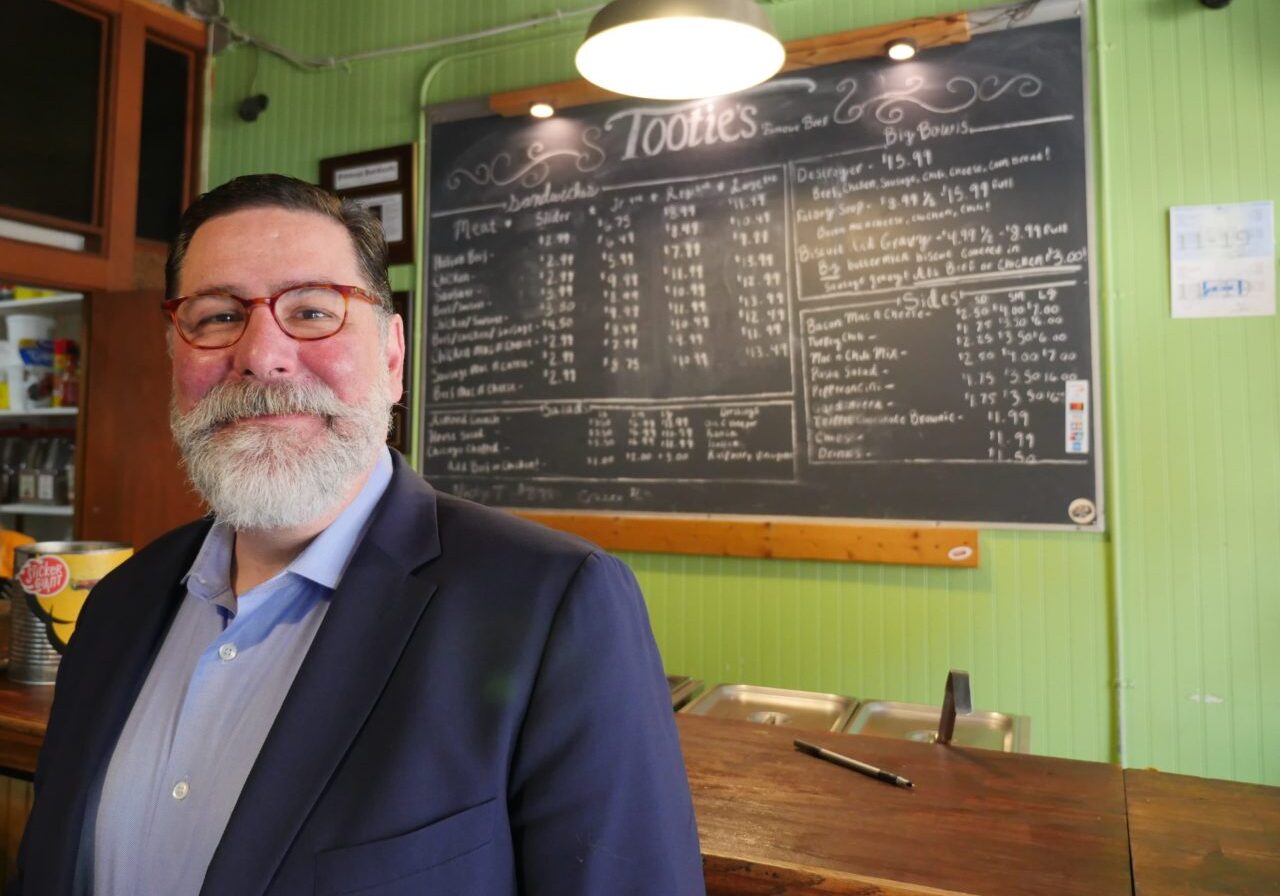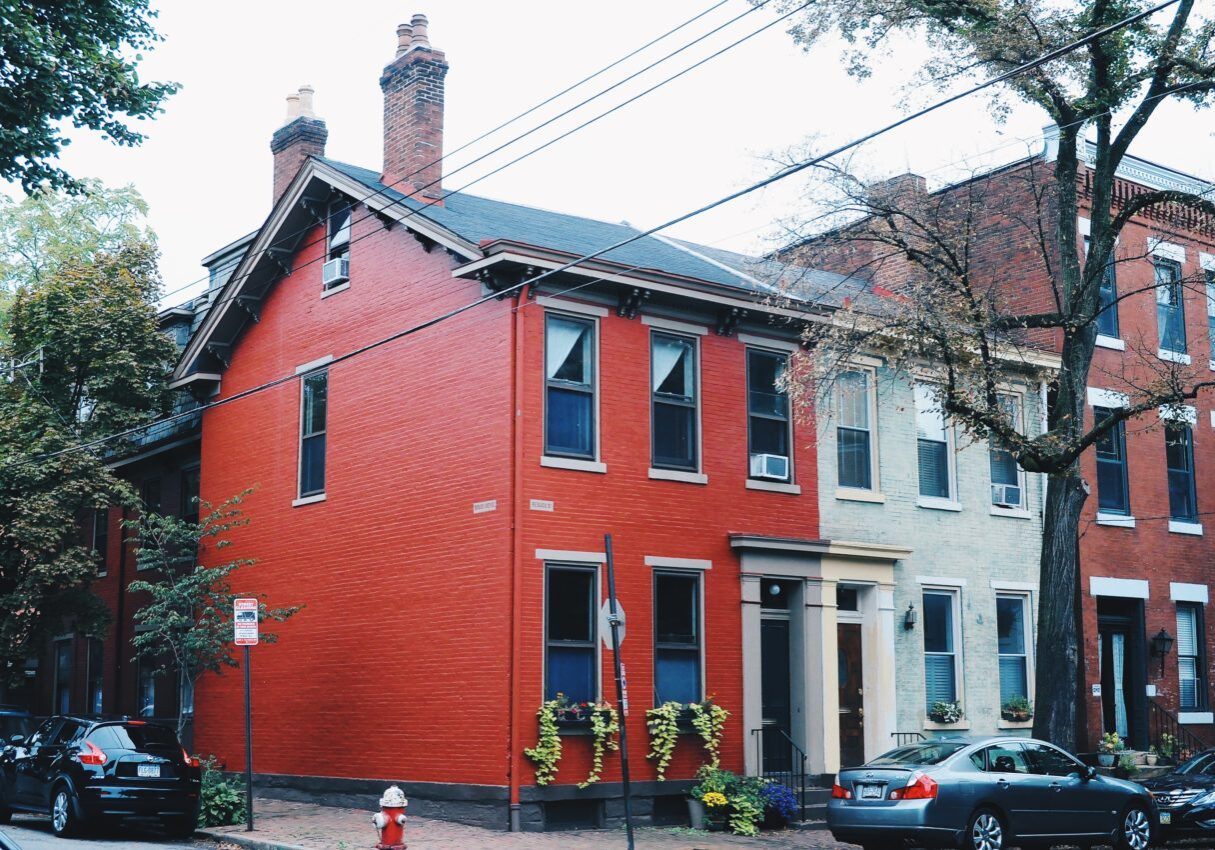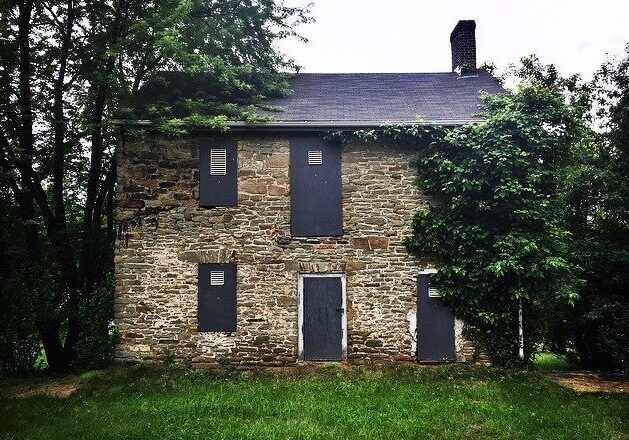As a volunteer at the Heinz History Center, I love to ask all the employees about their favorite bits of ‘unknown’ or ‘obscure’ Pittsburgh history. Sure, Heinz Ketchup was born here as was the Ferris wheel and the Primanti Brothers sandwich, but there are so many more stories about Pittsburgh-area inventions and businesses and people and places that aren’t getting told. So I decided to email and call some of my favorite historians and curators and history buffs to ask them about their favorite bits of Pittsburgh history that you’ve probably never heard of. And they didn’t let me down. From costumed cats to lion attacks to bingo – Pittsburgh’s history is packed with more quirky anecdotes than anyone ever could have imagined.
Did you know that you can watch Very Pittsburgh shows on your TV?
📺
Grab the Very Local channel on Roku, Amazon Fire and Apple TV to watch all of our shows for FREE.
THE CAT WHO LOVED FOOTBALL
Last year, I was lucky enough to get a tour of the Western Pennsylvania Sports Museum (located at the John Heinz History Center) from Anne Madarasz and I was dazzled by her wealth of Pittsburgh sports history. As chief historian at the Heinz History Center, Anne is constantly uncovering unknown bits of Western Pennsylvania trivia, though she didn’t have to go too far back in time to share one of her favorite stories about a sports-obsessed critter.
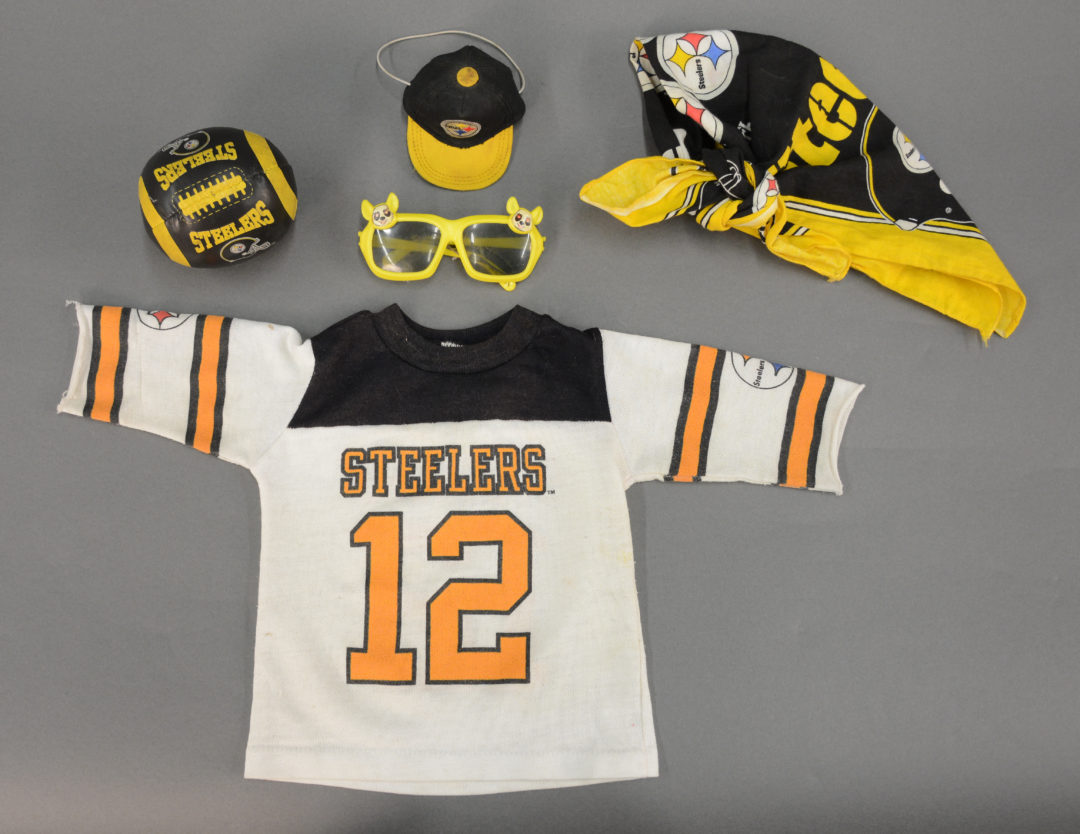
Anne shares:
Steelers fans come in all shapes, sizes, and species. One famous fan, Pudgie Wudgie, even had four legs and a tail. Plum resident Frank Furko adopted Pudgie, an orange, male tabby kitten from the Animal Rescue League in 1986. He taught Pudgie tricks, jumping through hoops, kicking a ball, and answering a small phone, that the cat loved to perform. Pudgie traveled everywhere with Furko, riding on his own little platform in the front seat of Frank’s truck and happily visited with people at schools, hospitals, and community fundraisers.
Furko, who lived on his family farm, located next to Oakmont Country Club, was an ardent sports fan, supporting his alma mater Plum High School and the professional teams in Pittsburgh. He took Pudgie Wudgie with him to tailgate at Steeler games. Pudgie happily wore his black and gold fan gear and visited with the faithful in the parking lots outside Three Rivers Stadium. He attracted attention everywhere he went, often wearing one of the more than 250 costumes and hats from his collection at home. Though he passed away in 2001, Pudgie lives on in the Western Pennsylvania Sports Museum and in a giant mural visible from the Pennsylvania Turnpike.
THE BIRTH OF BINGO
JaQuay Edward Carter is the founder and president of the Greater Hazelwood Historical Society of Pittsburgh. His quest to uncover the history of Hazelwood has been full of surprises, and there’s one local bit of history that JaQuay’s been especially obsessed with: the invention of the game bingo. He recalls, “I think a member of the historical society first mentioned it to me and I’ve been researching it ever since.” He’s poured over old newspapers, census records, army registration cards and family trees to uncover the story.
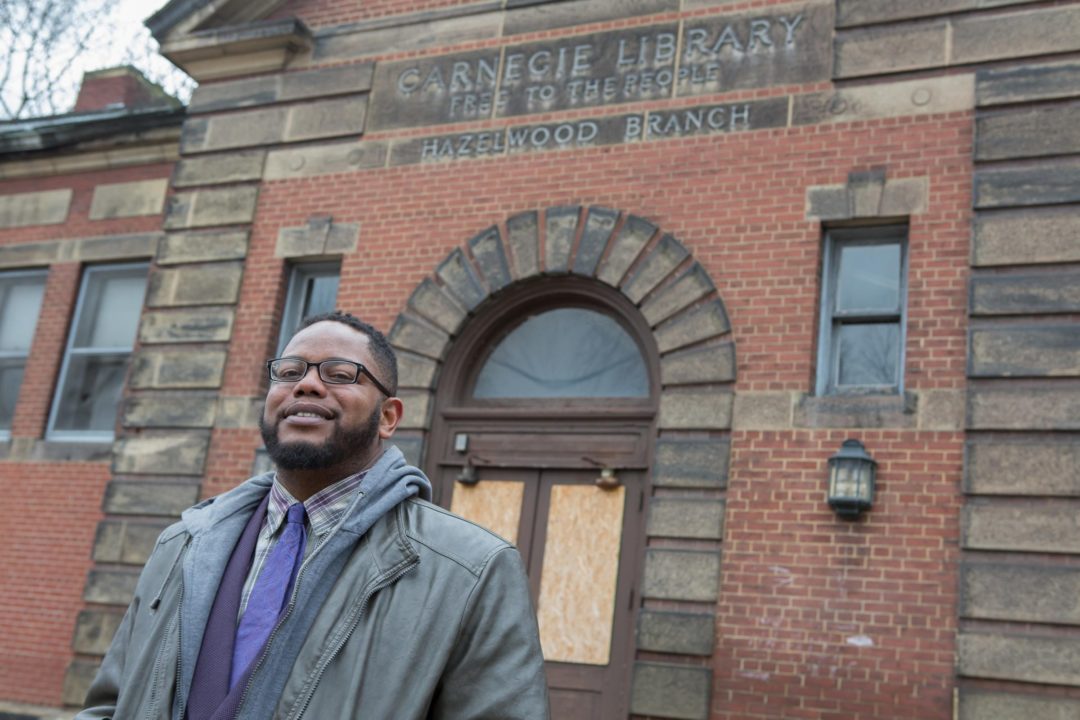
JaQuay shares:
Hugh J. Ward invented the game in the early twenties. He had worked for the railroad, but on the side he was an inventor. He was always coming up with different ways to do things. And he was inspired by this game in Canada he’d seen called ‘Housey Housey.’ He simplified the game, created a board with five columns and called it bingo, which was a popular and catchy word at the time. It was an easier word to say, and then people would shout it out when they won. There were imitations and variations of bingo, but he copyrighted it. He died without making any money off the game but he lived comfortably from his other jobs. Ward never saw its popularity because that sort of gambling was really taboo during his lifetime. Back then, people were arrested for playing bingo. I have an article from 1938 about this fifty-year-old woman who was arrested in Hazelwood for playing bingo. There are so many games around today that have evolved from bingo. Now there’s ‘geography bingo’ and ‘Black history bingo.’ He really brought a lot of joy to a lot of people.
Later on, I was able to find his death records, which had an address in Hazelwood and that house is still there. The day I found that out, I called my friend from the historical society and told her, “I have something exciting to tell you about your house. Did you know that the inventor of bingo was living at your house up until the time he died?” She had no idea. We’re going to get a historical marker to put there, which will be the first one in Hazelwood.
[MORE: Check out the story that JaQuay Edward Carter wrote for Very Local about Ajax Jones, the unofficial first Black mayor of Pittsburgh]
SKETCHES FROM AN 8-YEAR OLD MOVIE STAR
As senior curator at the Heinz History Center, Leslie Przybylek has to know about a lot of things. Just last year, Leslie helped me research the beloved Pittsburgh dessert, strawberry pretzel salad. Thanks to Leslie, we were able to put the quirky salad in a greater context that touched on many things from church picnics to the Napoleonic era. In response to our request for an obscure bit of Pittsburgh history, Leslie focused on an artifact from the museum’s newest exhibit.
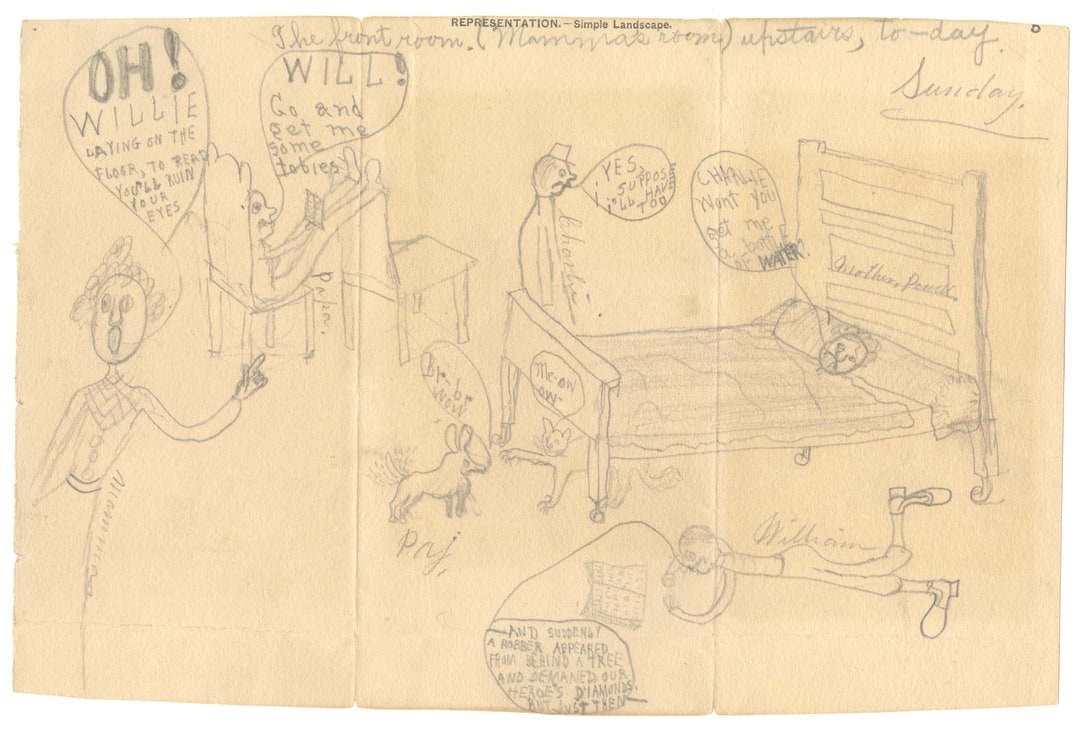
Leslie shares:
One of my favorite “obscure” artifacts currently on display at the Heinz History Center’s new exhibition Smithsonian’s Portraits of Pittsburgh: Works from the National Portrait Gallery is a page from a child’s sketchbook from the early 1900s. Labeled “Sunday,” the picture shows five people, plus a dog and a cat, all hanging out in what the artist calls “The front room (Mamma’s room).” In typical childish voice balloons, the characters in the sketch interact and talk to each other. A man labeled “Papa” asks a boy named “Will” to get him a “tobie” (a cigar). A woman scolds “Willie” for lying on the floor reading. The object of their attention, “William,” sprawls on the ground, engrossed in a book.
In fact, William was the drawing’s young artist. He later became famous as William Powell the movie star, debonair hero of movies such as “The Thin Man” (1934). Powell grew up in Allegheny City and went to the Sixth Ward School before the family moved away when he was about 15 years old. He caught the acting bug when his mother took him to Pittsburgh’s old vaudeville houses, the Bijou and Alvin theaters. While most people today remember Powell for his roles as a leading man, at the beginning of his career he usually played villains, thanks to his distinctive looks.
Hints of the melodramas and detective stories that later shaped his career can already be found in this childhood sketch, as William reads his book aloud: “–And suddenly a robber appeared from behind a tree and demanded our heroe’s (sic) diamonds but just then –”
Alas, our hero didn’t reveal the rest of the story in his sketch.
A LION ATTACK IN OAKLAND
Brian Butko, director of publications at the Heinz History Center, is one of my favorite people to talk to because he’s always ready with an amazing tale about a Pittsburgh amusement park. He’s written two books on the topic already (with a third on the way) and I was sure he must have an obscure bit of history to share. Brian explains that “having edited Western Pennsylvania History magazine for the past two decades, I get to enjoy obscure local history every single day!” Brian shared some of his research regarding Pittsburgh’s long-gone amusement park, Luna Park, which sat in the middle of Oakland from 1905 to 1909. The park was built by Frederick Ingersoll, who also built some of Kennywood’s earliest rides.
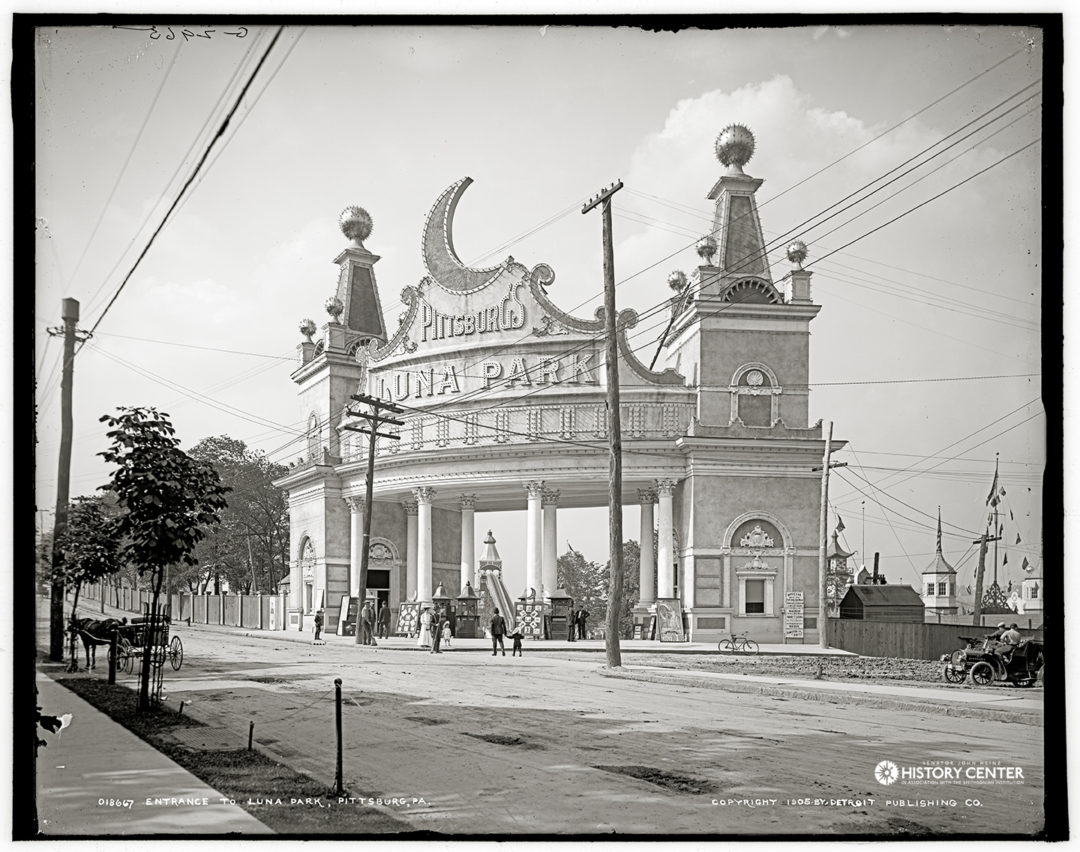
Brian shares:
Luna Park, though a dazzling landmark, is unfortunately best remembered for a lion attack. On a busy August afternoon in 1907, a young cage cleaner left the door open and the lion escaped, jumping on Anna Hucke, a 63-year-old widow and grandmother. The 600-lb. lion crushed her ribs, broke her arm, punctured her lung, tore flesh from her hip and thigh. People were screaming, hiding, fainting. As customers ran out, curious neighbors ran in. Three officers with guns chased it while patrons grabbed Remington rifles from the shooting gallery. When the lion fell, its skin was riddled with more than 200 small caliber bullets — but that didn’t stop the morbid from carving out every entry wound to grab a souvenir of orange fur and blood. The claws were pulled off and his teeth hammered out too. Anna struggled through the night and in the morning she passed away quietly. The coroner carefully wrote the cause as “Bitten by lion, fracture of ribs and puncture of lungs” along with “heart failure.”
MUMS MADE OF MINK
As a curator at the Heinz History Center, Emily Ruby sees a lot of different historical objects. When it came to sharing a favorite piece of lesser-known Pittsburgh history, Emily settled on a mysterious artifact that offers a glimpse into the lives of well-dressed Pittsburghers during the middle of the last century.
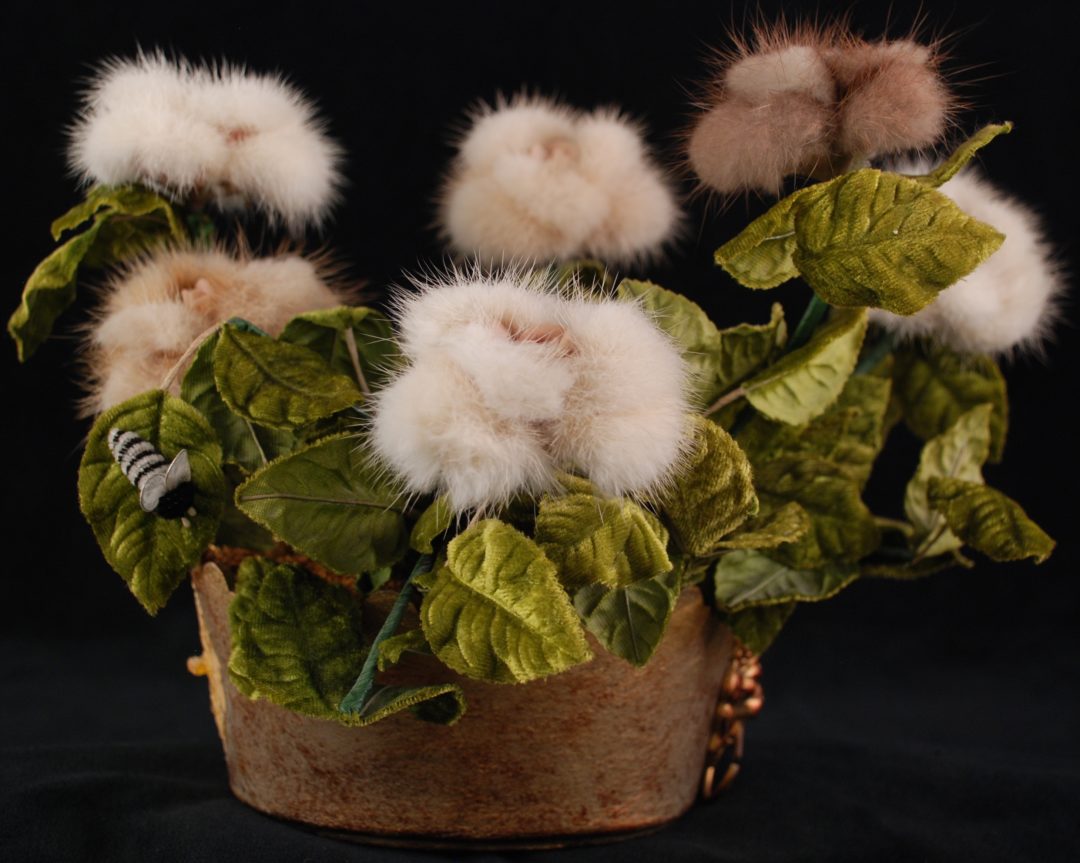
Emily shares:
Many Pittsburghers might remember Azen’s; some might even have an Azen piece hanging in their closet. Azen’s, a downtown institution founded in 1906, supplied the region with fine fur until 1981. A mink flower bouquet, donated to the History Center by Christopher Milne, dates to 1968 when Milne’s uncle, Dr. Clifford Lee Wilmoth, went to Azen’s to choose a fur coat for his wife as an anniversary gift. Wilmoth was a surgeon at Shadyside Hospital. The company sent him home with a bouquet of its various mink colors. Accompanying the bouquet was a “Happy Anniversary” card signed by Harry Azen, with instructions to “nurture these flowers and soon they will grow into a full-length mink coat.” It is unclear whether this floral gift was a one-time sales pitch for a special client or a regular enticement used by Azen to cultivate customers in the 1960s.
Guy Herrmann of Carl Herrmann Furs recalled that accessory manufacturers made those types of bouquets in the 1960s and 1970s to generate conversation and interest in the office. Fur manufacturers also sent elaborate samples to retail stores, but those were rarely sent to customers’ homes. Perhaps the Wilmoths were special customers of Azen’s and were given this extra consideration by Harry Azen.
A DICKENSIAN MEET-UP IN PITTSBURGH
Rick Sebak is the creator of WQED’s “Pittsburgh History Series” and Rick says that “because of that, people think of me as a historian. And sometimes I feel like a charlatan as far as that’s concerned. But I don’t mind it because I have developed a love for history. I know that the history you learn in school is military and political history and it downplays the history of everything else — the history of restaurants or amusement parks. And that history is just as important, maybe even more important sometimes.” Rick loves obscure Pittsburgh history and wasn’t sure which anecdote to share with us. Then he remembered something that he learned recently while researching one of his articles for Pittsburgh Magazine.
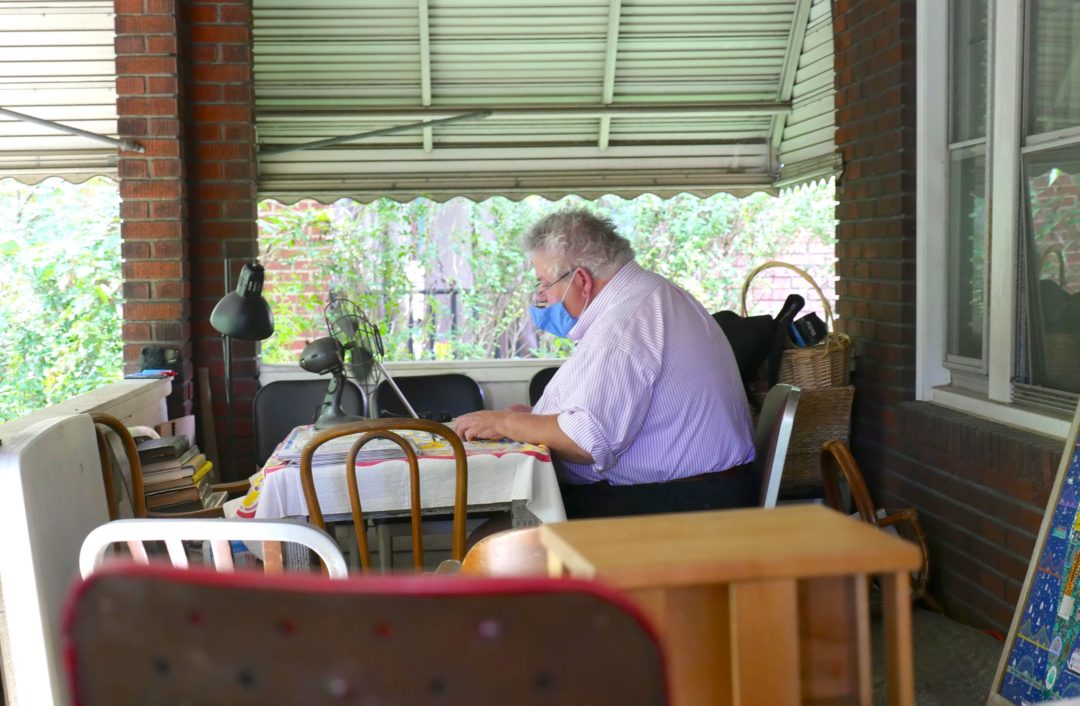
Rick shares:
When Charles Dickens came to Pittsburgh in 1842, the word got out that he was here. He wasn’t even here for a week. So many people wanted to meet him that he agreed to accept visitors at his hotel. I found a lot of this at the Pennsylvania Department of the Carnegie Library. I went through all these articles and the very last one said that someone, either at the hotel or someone else, put up a guest registry so that they could record who came to meet Charles Dickens. The man who was then mayor of Allegheny City, Colonel William Foster, came to meet Charles Dickens. Dickens was only in his thirties but he was already very famous. And the mayor of Allegheny City brought with him his 16-year-old son, Stephen Foster.
So at a hotel in downtown Pittsburgh in 1842, Charles Dickens, the first great pop novelist, met Stephen Foster, the first great pop composer. Sometimes Pittsburgh calls itself the pop city and that’s what locks it in for me. Because these two pop pioneers met here in town. I love the serendipity of it and we have to thank whoever thought to put a registry there and someone else who thought to write it up in the paper.

